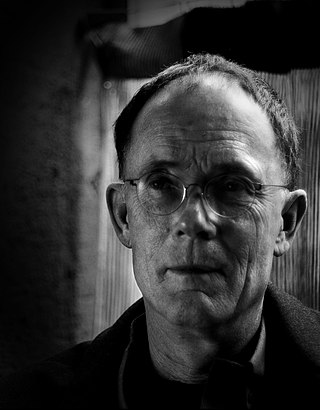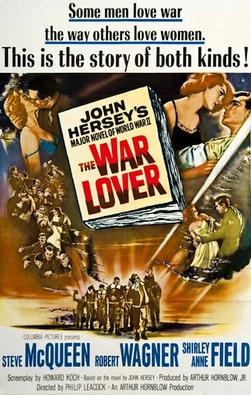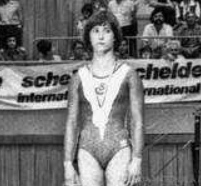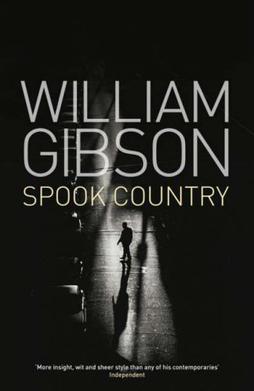
William Ford Gibson is an American-Canadian speculative fiction writer and essayist widely credited with pioneering the science fiction subgenre known as cyberpunk. Beginning his writing career in the late 1970s, his early works were noir, near-future stories that explored the effects of technology, cybernetics, and computer networks on humans, a "combination of lowlife and high tech"—and helped to create an iconography for the information age before the ubiquity of the Internet in the 1990s. Gibson coined the term "cyberspace" for "widespread, interconnected digital technology" in his short story "Burning Chrome" (1982), and later popularized the concept in his acclaimed debut novel Neuromancer (1984). These early works of Gibson's have been credited with "renovating" science fiction literature in the 1980s.

Pattern Recognition is a novel by science fiction writer William Gibson published in 2003. Set in August and September 2002, the story follows Cayce Pollard, a 32-year-old marketing consultant who has a psychological sensitivity to corporate symbols. The action takes place in London, Tokyo, and Moscow as Cayce judges the effectiveness of a proposed corporate symbol and is hired to seek the creators of film clips anonymously posted to the internet.

Bibendum, commonly referred to in English as the Michelin Man or Michelin Tire Man, is the official mascot of the Michelin tire company. A humanoid figure consisting of stacked white tires, it was introduced at the Lyon Exhibition of 1894 where the Michelin brothers had a stand. He is one of the world's oldest trademarks still in active use. The slogan Nunc est bibendum is taken from Horace's Odes. He is also referred to as Bib or Bibelobis.

Thigh-high boots, known also as thigh-length boots or simply thigh boots, are boots that extend above the knees to at least mid-thigh. Other terms for this footwear include over-the-knee boots, a name originally used for 15th century riding boots for men. These are sometimes called pirate boots, especially when cuffed. Over-the-knee boots are sometimes abbreviated to OTK boots. Lengths vary from reaching just over the knee to reaching almost to the crotch.

Stella Nina McCartney is an English fashion designer. She is a daughter of British singer-songwriter Paul McCartney and the American photographer and animals rights activist Linda McCartney. Like her parents, McCartney is a supporter of animal rights and environmentalism, and uses vegetarian and animal-free alternatives in her work. Since 2005, she has designed an activewear collection for Adidas.

Rage is an all-night Australian music video program broadcast on ABC TV on Friday nights, Saturday mornings and Saturday nights. It was first screened on the weekend of Friday, 17 April 1987. With Soul Train and Video Hits no longer being produced, it is the oldest music television program currently still in production as of 2023. On Friday and Saturday nights, Rage typically starts between 11:00pm and 1:00am.

The War Lover is a 1962 British war film directed by Philip Leacock and written by Howard Koch, loosely based on the 1959 novel by John Hersey, altering the names of characters and events but retaining its basic framework. It stars Steve McQueen, Robert Wagner and Shirley Anne Field.

Curt Herzstark was an Austrian engineer. During World War II, he designed plans for a mechanical pocket calculator.
Cayce may refer to:

Brick is a 2005 American neo-noir mystery thriller film written and directed by Rian Johnson in his directorial debut, starring Joseph Gordon-Levitt. Brick was distributed by Focus Features, and opened in New York and Los Angeles on April 7, 2006. The film's narrative centers on a hardboiled detective story set in a California suburb. Most of the main characters are high school students. The film draws heavily in plot, characterization, and dialogue from hardboiled classics, especially those by Dashiell Hammett. The title refers to a block of heroin, compressed roughly to the size and shape of a brick.

"Not Now" is a song by American rock band Blink-182 that was released on November 28, 2005. It was the lone single from the group's first compilation album, Greatest Hits (2005), because it was the only song on the compilation that was previously unreleased in the US. The song had been composed and recorded during the sessions that produced the group's self-titled 2003 album. "Not Now" would be the group's last single as a band before their four-year hiatus from 2005 to 2009.

What Not to Wear is an American makeover reality television series based on the British show of the same name. The show premiered on January 18, 2003 and ended on October 18, 2013, airing on TLC in the United States. What Not to Wear was hosted by Stacy London and Clinton Kelly, though London’s Season 1 co-host was Wayne Scot Lukas. Also part of the show was head makeover artist Carmindy and hairstylist Nick Arrojo from season 1 through season 6. Celebrity hairstylist Ted Gibson replaced Arrojo beginning in season 7, through season 10.

To enhance water quality monitoring in a drinking water network, water sampling stations are installed at various points along the network's route. These sampling stations are typically positioned at street level, where they connect to a local water main, and are designed as enclosed, secured boxes containing a small sink and spigot to aid in sample collection. Collected samples are analyzed for bacteria, chlorine levels, pH, inorganic and organic pollutants, turbidity, odor and many other water quality indicators.

Stella Heorhiivna Zakharova is a retired gymnast who competed internationally for the former Soviet Union between 1977 and 1982. She was an Olympic and World Championship gold medalist in team competitions, and won individual all-around titles at other events.
Hubertus Bigend is a fictional character appearing in the third trilogy of novels of science fiction and literary author William Gibson. Bigend is the antihero of Gibson's Pattern Recognition (2003), Spook Country (2007) and Zero History (2010). In an interview Gibson says "I've always had a sense of Bigend as someone who presents himself as though he knows what's going on, but who in fact doesn't. It's just my sense of the subtext of the character: he's bullshitting himself, at the same time as he's bullshitting all of us."

Spook Country is a 2007 novel by speculative fiction author William Gibson. A political thriller set in contemporary North America, it followed on from the author's previous novel, Pattern Recognition (2003), and was succeeded in 2010 by Zero History, which featured much of the same core cast of characters. The plot comprises the intersecting tales of three protagonists: Hollis Henry, a musician-turned-journalist researching a story on locative art; Tito, a young Cuban-Chinese operative whose family is on occasion in the employ of a renegade ex-CIA agent; and Milgrim, a drug-addled translator held captive by Brown, a strangely authoritarian and secretive man. Themes explored include the ubiquity of locative technology, the eversion of cyberspace and the political climate of the United States in the aftermath of the September 11, 2001 attacks.

Zero History is a novel by William Gibson published in 2010. It concludes the informal trilogy begun by Pattern Recognition (2003) and continued by Spook Country (2007), and features the characters Hollis Henry and Milgrim from the latter novel as its protagonists.

4:44 Last Day on Earth is a 2011 apocalyptic drama film written and directed by Abel Ferrara and starring Willem Dafoe, Shanyn Leigh, Natasha Lyonne and Paul Hipp. An international co-production of the United States, Switzerland, Chile and France, the film received mixed reviews from critics upon release.

Esther Mahlangu is a South African artist. She is known for her bold large-scale contemporary paintings that reference her Ndebele heritage. She is one of South Africa's best known artists.

A lavallière, also called a pussycat bow or pussybow, is a style of neckwear worn with women's and girls' blouses and bodices. It is a bow tied at the neck, which has been likened to those sometimes put on "pussy cats".